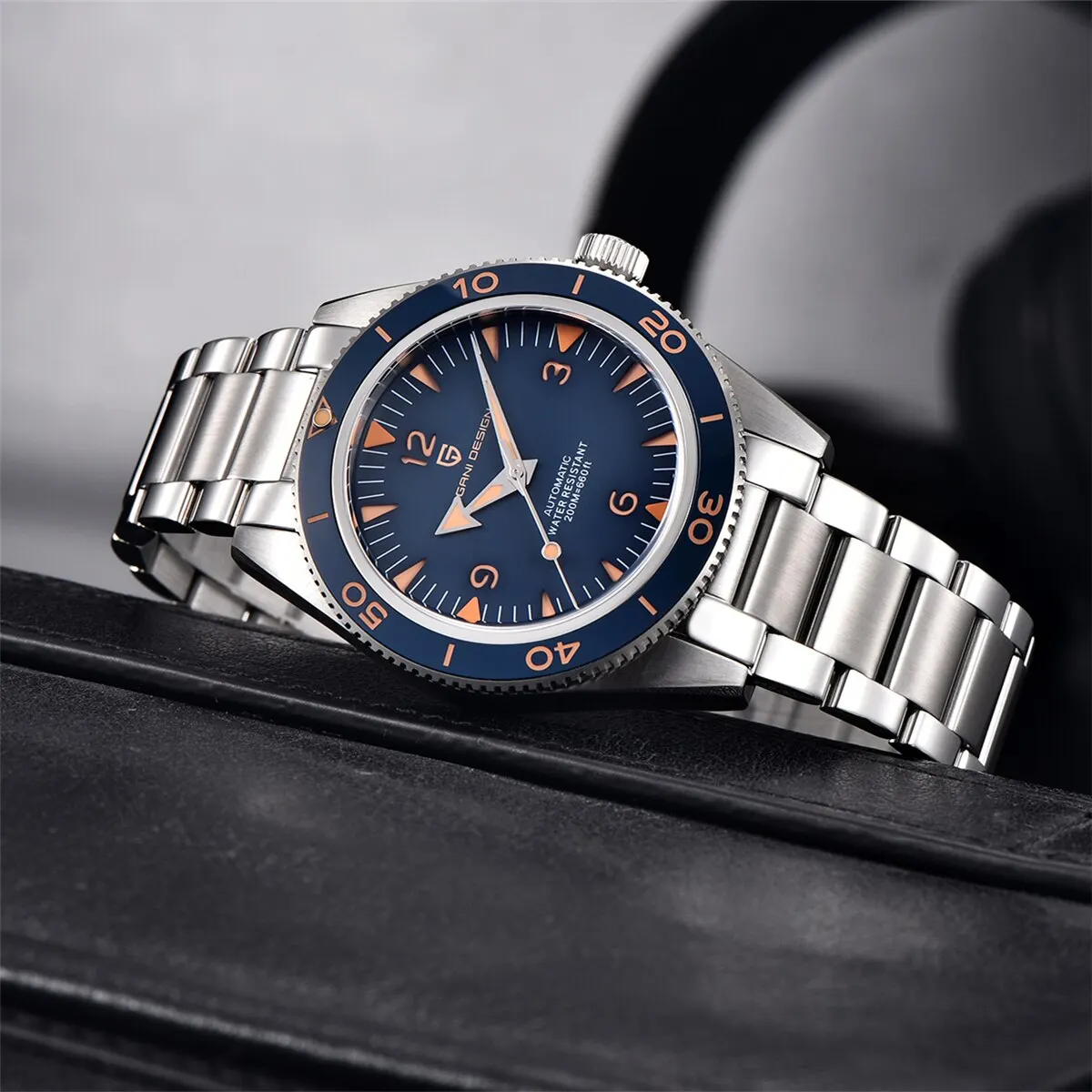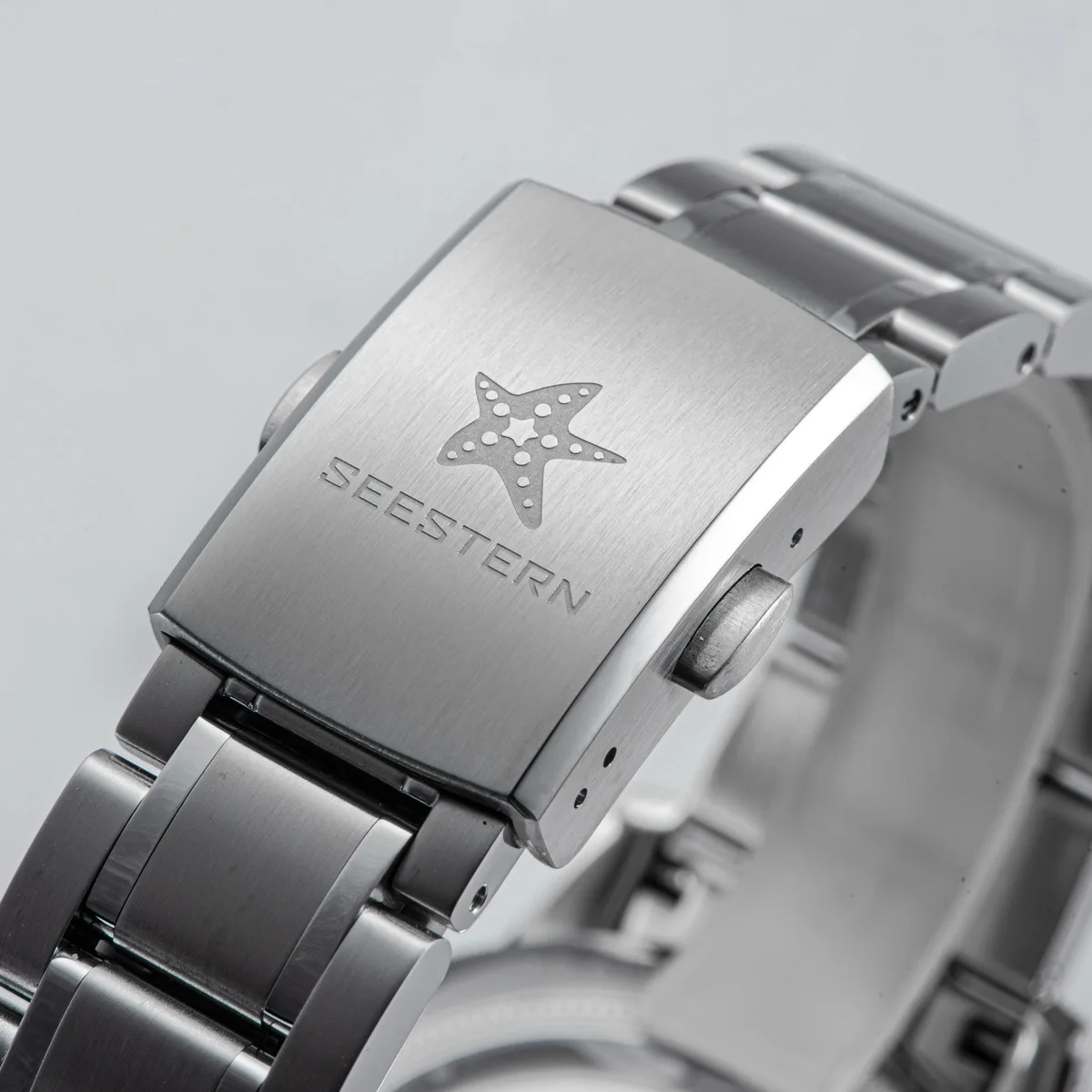What is a GMT Complication in Watches?
A GMT complication is a specialized feature in watches that allows you to track multiple time zones simultaneously. Unlike standard watches that only display one time zone, GMT watches include an additional hand that completes one full rotation every 24 hours, making it possible to read a second time zone at a glance.
The term “GMT” stands for Greenwich Mean Time, which refers to the mean solar time at the Royal Observatory in Greenwich, London. Historically, GMT served as the global time standard from 1884 until 1972, when it was replaced by Coordinated Universal Time (UTC). Despite this change, the term “GMT” has remained deeply ingrained in horology, giving its name to this practical complication.
What sets the GMT complication apart from other watch complications is its focus on geographical utility rather than timekeeping precision. While chronographs measure elapsed time and perpetual calendars track complex calendar information, GMT functionality in dive watches enables users to maintain connection across global time zones.
At its most basic, a GMT watch consists of two key components: a dedicated GMT hand (often distinguished by a contrasting color) and a 24-hour scale. This combination allows travelers, pilots, business professionals, and divers to maintain awareness of local time while keeping track of home time—or any other time zone of significance.
The practical application of GMT and world time watches becomes clear when considering how pilots use them to track multiple time zones during long-haul flights or how business professionals monitor markets operating in different parts of the world.
The Evolution of GMT Complications in Dive Watches
The GMT complication has an interesting origin story that begins in the golden age of commercial aviation. The first dedicated GMT watch—the Rolex GMT-Master—was developed in the 1950s specifically for Pan American Airways pilots who needed to track multiple time zones during transcontinental flights.
Initially, GMT functions existed separately from diving watches, which were focused solely on underwater timing and safety. However, as international travel became more accessible in the 1960s and 70s, watch manufacturers recognized an emerging need: divers who traveled internationally required both functions in a single timepiece.
This convergence created a new category of tool watches that could serve multiple purposes. Early examples featured innovative solutions to incorporate both timing systems without compromising either function.
The evolution continued as recreational diving tourism expanded globally. Divers traveling to exotic locations needed to track both local and home time zones while maintaining the essential dive timing functions. Watch designers responded with increasingly sophisticated designs that balanced these dual requirements.
What began as purely functional tools have evolved into versatile timepieces that seamlessly transition from underwater adventures to international business meetings. Modern GMT functions on dive watches represent the perfect marriage of two distinct but complementary timing needs for the global traveler.
Key Components of a GMT Dive Watch
Understanding the physical components of a GMT dive watch helps appreciate how these versatile timepieces function. Each element serves a specific purpose in the overall system:
The GMT hand is perhaps the most distinctive visual feature. This additional hand typically completes one full rotation every 24 hours (unlike the standard hour hand that rotates twice daily). To help users distinguish it from other hands at a glance, manufacturers often design GMT hands with:
– Bright contrasting colors (commonly red, orange, or blue)
– Distinctive arrow or triangle-shaped tips
– Different lengths or widths than the standard hands
The 24-hour scale is equally important, providing the reference against which the GMT hand is read. This scale may appear in several locations:
– On a fixed or rotating bezel
– Along the chapter ring (the outer edge of the dial)
– Directly printed on the dial itself
The GMT bezel deserves special attention, particularly in dive watches where it must coexist with diving functions. Many GMT dive watches feature bidirectional rotating bezels that allow tracking a third time zone, though this creates interesting design challenges when combined with traditional dive timing needs.
Crown systems on GMT dive watches must control both standard time-setting functions and the GMT mechanism. Depending on the movement type, this may involve:
– Multiple crown positions
– Secondary crowns for specific functions
– Push buttons for quick adjustments
These components work together as an integrated system, allowing users to track multiple time zones while maintaining essential dive timing capabilities.
“True” GMT vs. “Caller” GMT: Understanding the Difference
Not all GMT watches function the same way, and understanding the distinction between “True” and “Caller” GMT mechanisms is crucial when evaluating dive watches with this complication.
A “True” GMT (sometimes called “Traveler’s GMT”) features an independently adjustable hour hand, meaning:
– The main hour hand can jump forward or backward in one-hour increments
– This allows quick adjustment when changing time zones during travel
– The GMT hand typically stays set to home or reference time
– Date complications automatically adjust when the hour hand crosses midnight
In contrast, a “Caller” GMT (or “Office GMT”) operates differently:
– The GMT hand is independently adjustable
– Local time adjustment requires changing all hands simultaneously
– Setting a new time zone is less convenient for the traveler
– Often found in more affordable GMT watches
| Feature | True GMT | Caller GMT |
|---|---|---|
| Independent adjustment | Local hour hand | GMT hand |
| Ideal use case | Frequent travelers | Those tracking remote time zones from home |
| Date mechanism | Updates with local hour hand | May require manual adjustment when traveling |
| Typical movement cost | Higher | Lower |
The mechanical differences between these two approaches directly impact functionality. True GMT movements are generally more complex and expensive to manufacture, featuring additional gearing systems that enable the independent hour hand adjustment. Understanding the differences between GMT and dual time watches helps appreciate these mechanical distinctions.
For serious travelers, the convenience of a True GMT may justify the higher price, while occasional users might find a Caller GMT perfectly adequate for their needs.
Integrating GMT with Dive Watch Functionality
Combining GMT and dive watch functions presents unique challenges for watchmakers. The most significant hurdle is the bezel design: traditional dive watches require unidirectional bezels to track elapsed time safely, while GMT functions often utilize bidirectional bezels for time zone adjustments.
Manufacturers have developed several innovative approaches to solve this dilemma:
- Dual-purpose bezels that incorporate both minute and 24-hour markings
- Internal rotating bezels for one function with external bezels for the other
- Electronic or digital solutions in hybrid watches
- Dedicated chapter rings for the 24-hour scale
Another critical consideration is maintaining legibility despite the additional information. Professional dive watches must remain readable in low-light underwater conditions, even with the added GMT elements. Designers achieve this through:
- Strategic color coding to differentiate functions
- Optimized hand shapes and dimensions for quick recognition
- Enhanced luminous materials on critical dive timing elements
- Careful dial layout to prevent confusion
Through thoughtful engineering, manufacturers have successfully created timepieces that maintain their diving credibility while adding the practical benefits of GMT functionality.
How to Use a GMT Complication on Your Dive Watch
Mastering your GMT dive watch allows you to take full advantage of its versatility. Here’s how to set and use this feature effectively:
Basic setup (True GMT watch):
– Set the GMT hand to your reference time zone (often home)
– Adjust the main hour hand to local time in one-hour jumps
– Ensure the minute and second hands are set accurately
– Check that the date changes at midnight local timeBasic setup (Caller GMT watch):
– Set the main hands to your local time
– Independently adjust the GMT hand to track home or reference time
– Verify the date changes at the appropriate timeReading multiple time zones:
– Local time: Read the standard hour and minute hands
– Second time zone: Read where the GMT hand points on the 24-hour scale
– Remember the 24-hour format eliminates AM/PM confusionTracking a third time zone:
– Set the main time and GMT hand as above
– Rotate the bezel to align the third time zone’s offset with the GMT hand
– Read the third time zone by noting where the GMT hand points on the rotated bezel
For diving applications, the use cases for GMT dive watches include tracking:
– Surface interval times across time zones
– Decompression scheduling
– Boat departure times
– Dive site meeting times in local zones
When traveling internationally, remember to reset your watch appropriately when crossing time zones. For True GMT watches, this simply means adjusting the hour hand without stopping the watch. For Caller GMT watches, you’ll need to reset the main time while keeping the GMT hand on your reference time.
GMT Dive Watches for Frequent Travelers
For those who regularly cross time zones and enjoy diving, a GMT dive watch serves as the quintessential travel companion. These versatile timepieces eliminate the need to pack multiple watches for different activities during international trips.
The benefits of GMT dive watches for travelers extend well beyond basic time tracking:
- Manage dive planning and surface intervals while keeping track of home time
- Schedule calls or meetings with people in your home time zone without confusion
- Track flight departure times in local and destination time zones
- Maintain awareness of acceptable times to contact family or colleagues at home

Beyond diving-specific scenarios, these watches offer practical advantages for general travel:
– Robust construction withstands the rigors of travel
– Water resistance protects against unexpected exposure (rain, swimming)
– No need for batteries or charging like smartwatches
– Professional appearance that transitions from adventure to business settings
The combination of features found in GMT functions in tool watches makes these timepieces particularly valuable for the global adventurer. Whether you’re timing decompression stops in Bali while remembering when to call home, or attending business meetings in Tokyo while tracking New York market hours, a GMT dive watch handles it all with elegant efficiency.
Dive Bezel vs. GMT Bezel: Design and Function
Understanding the fundamental differences between dive and GMT bezels highlights the design compromises and innovations in watches that combine both functions.
| Feature | Dive Bezel | GMT Bezel |
|---|---|---|
| Rotation | Unidirectional (safety feature) | Typically bidirectional (convenience) |
| Markings | 60-minute scale | 24-hour scale |
| Special features | Luminous pip at zero | Often two-tone for day/night |
| Primary function | Tracking elapsed time | Displaying additional time zone |
| Safety consideration | Cannot accidentally increase time | Direction not safety-critical |
Dive bezels are purposely designed to rotate in only one direction (counterclockwise) as a safety mechanism—if accidentally bumped, they can only show more elapsed time than actual, encouraging divers to surface earlier rather than later. They typically feature minute markings from 0 to 60 and a prominent luminous marker at zero.
GMT bezels, conversely, often rotate bidirectionally for easier adjustment and display 24-hour markings. Many feature two-tone coloring (commonly blue/red or black/blue) to visually distinguish day and night hours.
Manufacturers have developed several approaches to reconcile these different requirements in GMT and dive watch functionality:
- Using an internal rotating GMT ring with an external dive bezel
- Creating dual-purpose bezels with both minute and hour markings
- Implementing electronic or digital solutions that display both functions
- Prioritizing one function over the other based on the watch’s primary purpose
When evaluating which design best meets your needs, consider your primary use case: if diving safety is paramount, ensure the watch maintains a proper unidirectional dive bezel; if frequent time zone changes are your priority, a bidirectional GMT bezel might be more important.
Advantages and Limitations of GMT Dive Watches
Like any specialized tool, GMT dive watches offer distinct advantages while also presenting certain limitations compared to single-function timepieces.
Advantages:
– Versatility for both travel and diving in a single watch
– Reduced need to pack multiple timepieces for different activities
– Ability to time dives while keeping track of home or destination time
– Typically robust construction suitable for adventure travel
– Distinctive appearance that often draws appreciation from watch enthusiasts
– Practical functionality for managing schedules across time zones
The advantages of GMT function in divers become particularly apparent during international dive trips, where keeping track of local dive times and home communication windows is essential.
Limitations:
– Increased dial complexity sometimes affects at-a-glance legibility
– Potential compromises in either the dive or GMT functionality
– Generally higher price point than single-purpose watches
– Bulkier dimensions on some models to accommodate additional mechanics
– Steeper learning curve to master all functions effectively
– Possible bezel compromises affecting diving safety features
When weighing these factors, consider your specific needs. A professional diver might prefer a dedicated diving instrument, while a recreational diver who travels frequently might find the combined functionality perfectly suited to their lifestyle.
Classic Automatic Dress Watches, Day Date Automatic Watches, Perpetual Calendar Automatic Watches
Price range: $540.60 through $574.60 Select options This product has multiple variants. The options may be chosen on the product pageAutomatic Chronograph Watches, Chronograph Pilot Watches
Price range: $233.36 through $237.58 Select options This product has multiple variants. The options may be chosen on the product pageClassic Automatic Dress Watches, GMT Automatic Watches, GMT Pilot Watches
Price range: $1,240.86 through $1,463.33 Select options This product has multiple variants. The options may be chosen on the product pageAutomatic Chronograph Watches, Classic Style Dive Watches
$3,053.06 Select options This product has multiple variants. The options may be chosen on the product pageAutomatic Skeleton Watches, Open Heart Automatic Watches
$98.36 Select options This product has multiple variants. The options may be chosen on the product pageBronze Automatic Watches, Military Inspired Automatic Watches, Professional Spec Dive Watches
Price range: $1,442.21 through $1,442.82 Select options This product has multiple variants. The options may be chosen on the product page
How to Choose the Right GMT Dive Watch
Selecting the ideal GMT dive watch requires careful consideration of your specific needs and priorities:
Start by assessing your primary use case:
– Will you use the watch more frequently for diving or for travel?
– How deep do you typically dive? (Recreational vs. technical diving)
– How often do you travel across time zones?
– Do you need to track more than two time zones regularly?
Technical considerations should include:
– Water resistance rating (minimum 200m for serious diving)
– Movement type (True GMT vs. Caller GMT)
– Bezel functionality (dive timing vs. GMT tracking)
– Legibility under various conditions
– Lume quality and placement for low-light reading

Practical aspects to evaluate:
– Case size and comfort on your wrist
– Strap options (rubber for diving, bracelet for versatility)
– Ease of operation with wet or gloved hands
– Overall durability for your lifestyle
Budget considerations will also play a role:
– Entry-level automatic GMT dive watches start around $500-1000
– Mid-range options with better movements typically cost $1000-3000
– Luxury brands and high-end movements can exceed $3000
Remember that the “perfect” GMT dive watch varies based on individual needs—a casual vacation diver has different requirements than a professional diver who frequently crosses time zones.
Are GMT Dive Watches Worth the Investment?
When considering the value proposition of GMT dive watches, it’s helpful to evaluate them against both your specific needs and the alternative of owning separate specialized watches.
For the frequent traveler who dives regularly, a quality GMT dive watch offers significant practical advantages. Rather than switching between different watches or compromising on functions, you get a versatile instrument capable of handling diverse situations. This “one watch solution” approach often justifies the higher initial investment compared to standard dive watches.
The value calculation changes for occasional divers or infrequent travelers. If you rarely cross time zones or dive only on annual vacations, the premium paid for GMT functionality might be harder to justify. In such cases, a standard dive watch might serve your needs adequately.
Beyond functionality, many automatic watches with GMT complications offer enduring value through quality construction and timeless design. Unlike electronic devices that become obsolete, a well-made mechanical GMT dive watch can provide decades of service when properly maintained.
The question of worth ultimately comes down to how well the watch’s capabilities align with your lifestyle. For those who will regularly use both the diving and GMT functions, these versatile timepieces represent not just a practical tool but a long-term investment in convenience and reliability.







